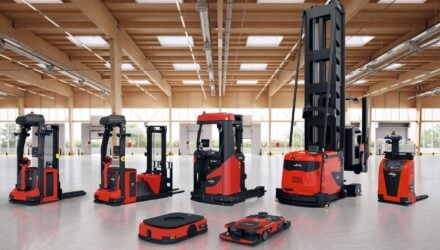
The number one priority for any fleet manager is, ultimately, efficiency. Ensuring that your fleet is performing at optimum levels is a tough job, with many factors to take into consideration, from available budget to staff levels to vehicle management. One of the simplest ways to see a productivity boost is to invest in new technology, and this is where hydraulic lifting equipment comes in.
By investing in such equipment, you will not only be able to boost fleet efficiency, you will also be able to minimise the risk of injuries occurring, use fewer resources per job, and save money in the long run. In this article, I’m going to walk you through the benefits of hydraulic lifting equipment and explain the reasons why this technology the investment.
What is hydraulic lifting equipment?
Hydraulic lifting equipment comes in a variety of forms, from small hand pumps and jacks to larger cranes and loading platforms, such as the ones we sell at Penny Hydraulics. Put simply, hydraulic machines use liquid and pressure to create forces that generate lifting power. It is a simple way of applying a large amount of force, making lifting tasks much simpler and safer. Our PH cranes and loading platforms incorporate full hydraulic control, ensuring smooth and precise load handling and reducing accidents.
Decreased chance of injury
The fleet industry can benefit from the use of hydraulic lifting equipment in many ways, the most important of which is that it lowers the chances of accidents occurring. There are thousands of injuries every year as a result of manual handling, whether due to accidents or poor training, while HSE estimates that as many as 6.6 million working days were lost due to work-related musculoskeletal disorders in 2017/2018.
By providing your staff with hydraulic lifting equipment, you can drastically reduce the chances of these injuries occurring. Hydraulic cranes and lifts mean that a lot of the hard work of manual handling is removed, taking the burden off your workers and decreasing lifting injuries. Less injuries means less time away from the job, improving both efficiency and staff morale.
Less workers will be required for one job
Another benefit of using hydraulic lifting power is that you require less manpower. When workers are required to load heavy items, you will need to ensure that you have enough people on hand to carry out the job safely. The heavier the load, the more resources are required, and the fewer staff members there are to work on other tasks.
By using the power of hydraulics, whether in the form of a crane or lift, you will need less manpower per job. It only takes a single worker to control the equipment using a remote-control system. This allows other workers to get on with different jobs, increasing overall workflow efficiency.
Speeds up the process
Not only does hydraulic equipment allow you to free up more human resources, it will also speed up the loading and unloading process. As a more controlled way of moving goods and equipment, hydraulics also decreases the chances of accidental drops damaging your stock. Hydraulic lifts brings an additional benefit in that they can lift multiple things at once, rather than manually loading and unloading each item individually, saving even more time.
More cost-effective
Every business needs to lower its costs and maximise its profits, without lowering standards. Hydraulic lifting equipment, while an investment at first, will achieve these goals in the long run. By decreasing accidents, requiring less manpower, and speeding up your workflow, investing in this technology will pay dividends in the long run. As with many investments in capital goods, purchasing lifting equipment may seem expensive at first, but factor in the potential gains and it will work out profitable.
Author: Dan Casey from hydraulic lifting equipment firm Penny Hydraulics







